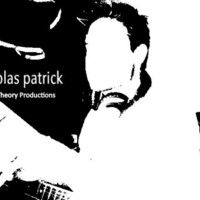RAPPORT How do you get into the communications loop? How can you respect and appreciate another person’s model of the world while keeping your own integrity? In education, therapy, counselling, business, selling and training, rapport or empathy is essential to establish an atmosphere of trust, confidence and participation, within which people can respond freely. What do we do to gain report with people, how do we create a relationship of trust and responsiveness, and how can really we refine and extend this natural skill? To get a practical, rather than a theoretical answer, turn the question the other way round. How do you know when two people are in a rapport? As you look around in restaurants, offices, any place where people meet and talk, how do you know which people have rapport and which do not? Communication seems to flow when two people are in rapport their bodies as well as their words match each other. What we say can create or destroy rapport, but that is only 7% of the communication. Body language and tonality are more important. You may have noticed that people who are in rapport tend to mirror and match each other in posture, gesture and eye contact. It is like a dance, where partners’ respond and mirror each other’s movements with movements of their own. They are engaged in a dance of mutual responsiveness. The body language is complimentary. Have you ever found yourself enjoying a conversation with somebody and noticing that both your bodies have adopted the same posture? The deeper that rapport, the closer the match will tend to be. This skill would seem to be inborn, for new-born babies moving in rhythm with the voices of the people around them. When people are not in rapport their bodies reflect it – whatever they are saying, their bodies will not be matching. They are not engaged in the dance and you can see it immediately. Successful people create rapport, and rapport creates trust. You can create rapport with whoever you wish by consciously refining the natural rapport skills that you use every day. By matching and mirroring body language and tonality you can very quickly gain rapport with almost anyone. Matching eye contact is an obvious rapport skill usually the only one that is consciously taught in English culture, which has a strong taboo against noticing body language consciously, and responding to it. To create the rapport join the other person’s dance by matching their body language sensitively and with respect. This builds a bridge between you and their model of the world. Matching is not mimicry, which is noticeable, exaggerated and indiscriminate copying of another person’s movements, and is usually considered offensive. You can match our movements by small hand movements, body movements by your head movements. This is called” crossover mirroring”. You can match distribution of the bodyweight, and basic posture. When people are like each other, they like each other. Matching breathing is a very powerful way of gaining rapport stop you may already of them have observed that when two people are in deep rapport they breathe in unison. These are the basic elements of all. But do not believe us. Notice what happens when you mirror others. Then notice what happens when you stop. Notice what people do who are in rapport. Start conscious of what you do naturally so you can refine it and choose it went and choose when to do it. Notice especially what happens when you mismatch. Some counsellors and therapists mirror and match unconsciously, almost compulsively. Mismatching is a very useful skill. The most elegant way to render conversation is to disengage from the dance. And you cannot disengage from the dance if you have not been dancing in the first place. The most extreme mismatch of courses is to turn your back. Voice matching is another way you can gain the rapport. You can match tonality, speed, volume and rhythm of speech. This is like joining another person song or music, you blend in and harmonise. You can use voice matching to gain rapport in a telephone conversation. Then you can also mismatch, changing the speed and tonality of your voice to end the conversation. This is a very useful skill. To close a telephone conversation naturally is sometimes very difficult. There are only two limits to your ability to gain report: the degree to which you see other people’s postures, gestures and speech patterns, and the skill with which you can match them in the dance of rapport. The relationship will be a harmonious dance between your integrity, what you do and believe wholeheartedly and how far you are willing to build a bridge to another person’s will model of the world. Notice how you feel when you match; you may well feel uncomfortable matching some people. There are certainly some behaviours you will not want to match directly. You would not match a breathing pattern that was much faster than was natural for you, Norwegian match in asthmatics breeding pattern. You could mirror both with small movements of your hand. A persons fidgety movements could be subtly mirrored by swaying your body. This is sometimes called cross matching, using some analogous behaviour rather than directly matching. If you are prepared to use this skills consciously, you can create rapport with whoever you choose. You do not have to like the other person to create rapport; you are simply building a bridge to understand them better. Creating rapport is one choice, and you will not know that it is effective and what results it has unless you try it So rapport is the total context round the verbal message. If the meaning of the communication is the response it elicits, gaining rapport is the ability to elicit responses. Reproduced with Kind Permission from”Introducing Neuro- Linguistic Programming” by Joseph O’Connor and John Seymour. For NLP training John Seymour can be reached at jsnlp.co.uk
















